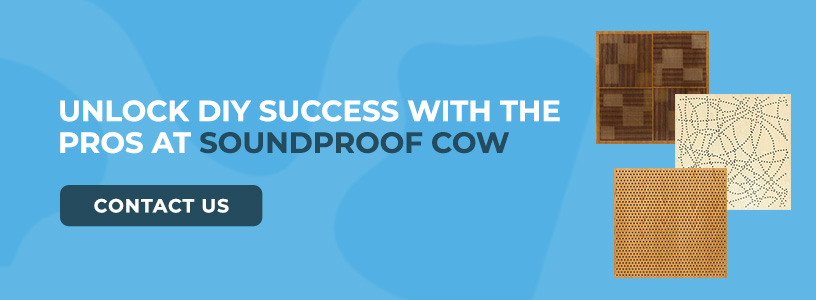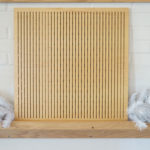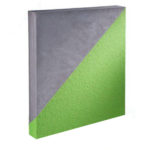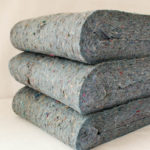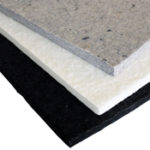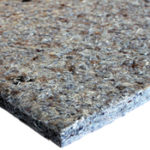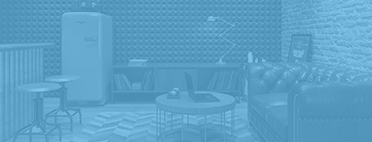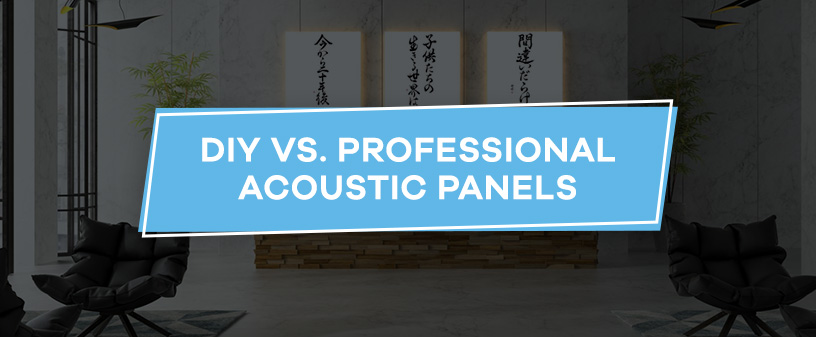
Clear, crisp sound is nonnegotiable when recording in your home studio or creating a cinema-like experience in your home theater. If your current acoustics leave you less than satisfied, high-quality panels may be the ideal solution for limiting reverb. But should you invest in professionally made acoustic panels or DIY? Exploring the pros and cons of each can help you make the best decision for your project.
The Details on Do-It-Yourself Acoustic Panels
If you have the time, expertise and access to top-quality, acoustically rated materials, DIY may be right for you. Before starting, consider the pros and cons of DIY acoustic sound panels.
Pros of DIY Acoustic Panels
For the DIY enthusiast, crafting your own sound panels can be an enjoyable experience. A few benefits of this approach include:
- Cost-effectiveness: Crafting your own acoustic panels allows you to control the investment or even install them in stages to spread out the cost over time.
- Customization: DIY offers high creative flexibility so you can tailor the panels to match your unique style and address your space’s specific acoustic challenges.
- Personal satisfaction: Making DIY sound panels gives you the opportunity to hone new skills and improve your acoustical knowledge.
- Control over materials: You can choose the materials you use based on your values and needs, such as locally sourced or eco-friendly options.
Cons of DIY Acoustic Sound Panels
Do-it-yourself sound panel disadvantages include:
- Time investment: Gaining acoustical knowledge and building high-quality DIY panels takes time.
- Quality control: Unless you are a seasoned pro, your finished panels may lack the aesthetics and consistent performance of professionally made ones.
- Testing and ratings: DIY panels typically lack the rigorous testing that professional panels undergo to ensure their performance.
- Hidden costs: Mistakes can lead to costly rework and material waste. DIY panels also may not last as long as professional options, which means replacing them sooner.
Popular Acoustic Paneling DIY Materials
DIY does not have to mean using subpar materials. For the high-performance solutions you need, partner with a reliable supplier of high-quality acoustic materials.
The most important part of a sound panel is the material inside it. Sound insulation absorbs sound energy to reduce reverb and echo. For example, Quiet Batt® Sound Insulation consists of 80% recycled cotton fibers and has a Class A™ flammability rating. Pack the insulation inside your panel for sound-deadening power.
Another option for the interior of your DIY panel is acoustic foam. This soft, dense foam traps sound and disperses it as heat. Go for a flexible polyester foam panel, or add some firepower with Class A Acoustic Foam.
Cotton is also a great DIY sound-reducing material — try the Echo Absorber™ Acoustic Cotton to create a better sound experience.
The Details on Professional Acoustic Panels
Professional acoustic panels blend superior sound absorption with high-quality materials and exceptional artisanship. Understanding the pros and cons can help you decide if this approach is best for solving your acoustic challenges.
Pros of Professional Acoustic Panels
Professionally made solutions offer several distinct benefits, including:
- Performance: Manufacturers build panels based on acoustic science using top-quality materials. Their solutions also include noise reduction coefficient (NRC) ratings for quantified, consistent and predictable sound absorption.
- Aesthetic appeal: Expect clean lines, professional finishes and a polished look that elevates your space.
- Time savings: There is no time involved in constructing the panels for you. You simply buy the product and mount it.
- Solves complex acoustics: If your space has special requirements, professional products can address specific problems.
Cons of Professional Acoustic Panels
Professional sound panels can have a couple of drawbacks:
- Higher cost: These panels will put a bigger dent in your wallet upfront.
- Less customization: While you can often choose fabrics and sizes, you may not have the same level of creative freedom as DIY. Art acoustic panels are the exception!
Types of Professional Acoustic Panels
Acoustic sound panels come in many materials, shapes, colors and sizes. Add a little art to your acoustics with custom Art Acoustic Panels. Fabric-wrapped panels like the Udderly Quiet® Acoustic Panels trap sound for better acoustic performance.
For a unique and appealing aesthetic, consider perforated wood panels. Elegant EccoTone™ Acoustic Wood Panels add a touch of class while absorbing and diffusing sound. Whether you want to mount acoustic panels to the wall or mount them to the ceiling, there is a product for that. You can also choose free-standing acoustic panels that go wherever you need them.
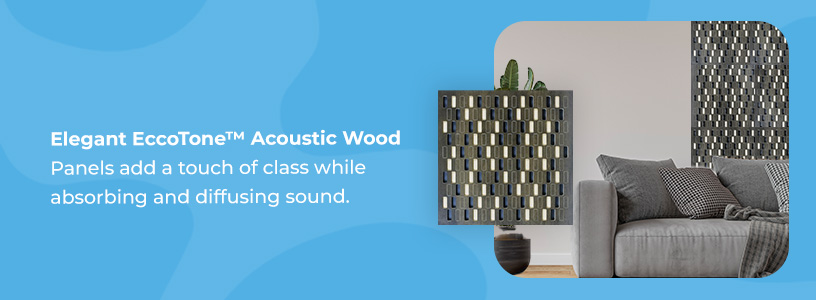
Comparing DIY vs. Professional Panels
Comparing and contrasting these options in more depth can help you make an informed decision.
Performance Comparison (Does It Actually Work?)
Explore how DIY and professional panels stack up for performance:
- DIY acoustic panels: Performance can range from average to effective, and results can be unpredictable without specialized testing equipment for verification. It all depends on your acoustical knowledge, material choices and construction skills.
- Professional acoustic panels: These panels produce consistent, predictable performance. Professionals use specialized materials and testing methods to ensure their panels meet specific goals.
The conclusion — choose professional panels for consistent performance. DIY can be good, but it is a riskier bet.
Aesthetic Considerations (Does It Look Good?)
Aesthetics influence the overall design of a space, so you should carefully consider their impact:
- DIY acoustic panels: DIY panels offer complete control over the look and feel of your panels, allowing for seamless integration with existing decor or the creation of a unique aesthetic. The downside is that your execution might not always match your vision.
- Professional acoustic panels: Professional panels come in a range of styles, fabrics and finishes to complement your space. Choose between sleek, modern panels or more traditional designs. The key is the attention to detail and quality craftsmanship.
The conclusion — if you have a strong vision and the skills to execute it, DIY may be for you. For guaranteed aesthetic appeal and a professional finish, we recommend professionally made panels.
Time and Effort (How Easy and Efficient Is It?)
Ease and efficiency are key in any home studio or theater improvement project, and acoustic panels are no exception. Here is how the two options compare in terms of time and effort investments:
- DIY acoustic panels: Sourcing materials, cutting wood, wrapping fabric and mounting can take days or longer.
- Professional acoustic panels: Professional panels take minimal time to install. You still have the DIY satisfaction of completing the project when you mount your panels.
The conclusion — professional is easier and more efficient when speed and performance both matter.
Making the Best Choice
While the ideal solution depends on your budget, space and design preferences, you can also take a hybrid approach by combining DIY and professional options. For example, blend DIY frames with professional acoustic insulation. You can even mix and match DIY with professional panels for a unique aesthetic. This strategy can help you benefit from the best of both worlds — enjoy high-performing materials while keeping costs down.
Unlock DIY Success With the Pros at Soundproof Cow
Whether you want to moo it yourself or leave it to the pros, acoustic panels can perfect the sound in your space. At Soundproof Cow, we have the know-how and materials to make your project a resounding success. Browse our range of DIY-friendly sound-absorbing products or expert-designed acoustic panels. Need some advice? Our herd is happy to answer any questions or make recommendations. Contact us today to discuss your soundproofing project!


